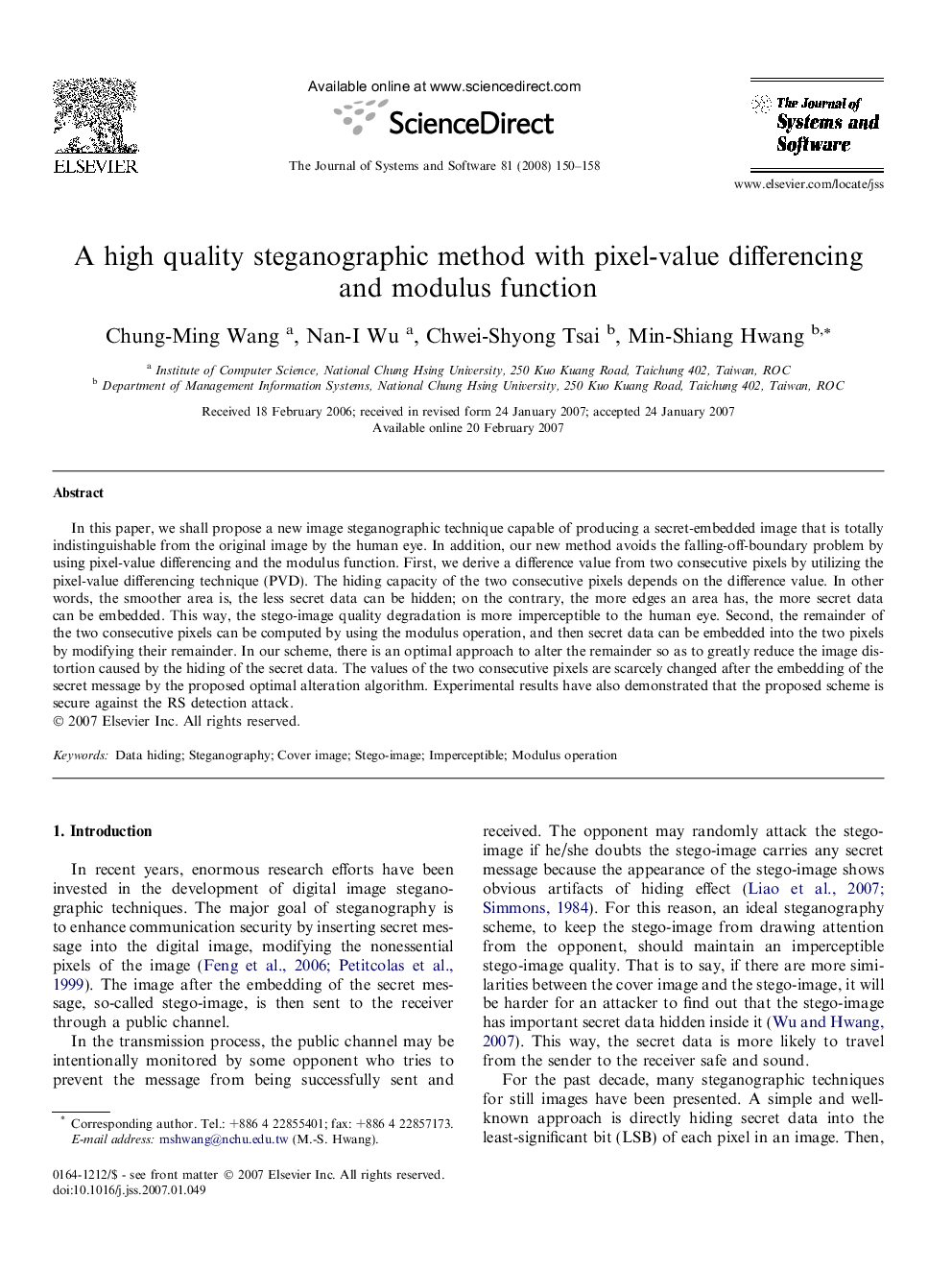| Article ID | Journal | Published Year | Pages | File Type |
|---|---|---|---|---|
| 461818 | Journal of Systems and Software | 2008 | 9 Pages |
In this paper, we shall propose a new image steganographic technique capable of producing a secret-embedded image that is totally indistinguishable from the original image by the human eye. In addition, our new method avoids the falling-off-boundary problem by using pixel-value differencing and the modulus function. First, we derive a difference value from two consecutive pixels by utilizing the pixel-value differencing technique (PVD). The hiding capacity of the two consecutive pixels depends on the difference value. In other words, the smoother area is, the less secret data can be hidden; on the contrary, the more edges an area has, the more secret data can be embedded. This way, the stego-image quality degradation is more imperceptible to the human eye. Second, the remainder of the two consecutive pixels can be computed by using the modulus operation, and then secret data can be embedded into the two pixels by modifying their remainder. In our scheme, there is an optimal approach to alter the remainder so as to greatly reduce the image distortion caused by the hiding of the secret data. The values of the two consecutive pixels are scarcely changed after the embedding of the secret message by the proposed optimal alteration algorithm. Experimental results have also demonstrated that the proposed scheme is secure against the RS detection attack.
